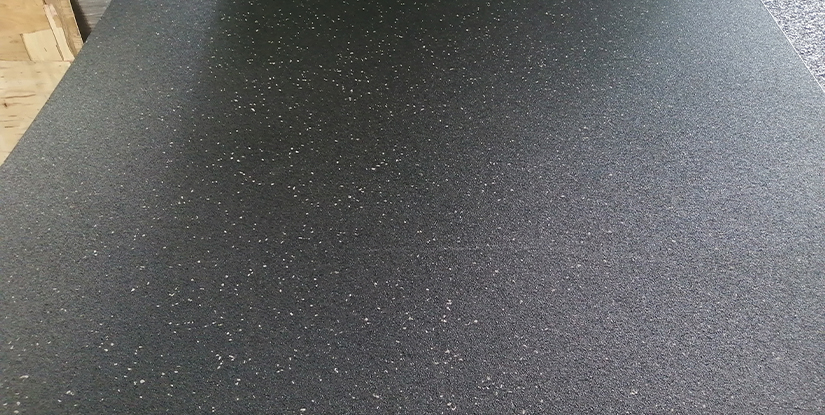Weight Mat Buying Guide: Types, Materials, and Care

Weight Mat: Professional Guide for Fitness Facilities and Home Gyms
A weight mat is a foundational element for any strength-training environment. Designed to protect flooring, reduce noise, dampen vibration, and improve safety during dynamic lifts, a properly selected mat enhances equipment longevity and user experience. This guide outlines key considerations — types, materials, sizing, maintenance, and best practices — to help facility managers, coaches, and home gym owners make an informed decision.
Why Use a Weight Mat?
- Floor protection: Prevents damage from dropped weights and heavy equipment.
- Noise reduction: Reduces impact noise in multi-use or residential settings.
- Vibration damping: Minimizes shock transfer to building structures.
- Safety: Provides a stable, non-slip surface for lifts and movements.
- Equipment stability: Protects barbells, plates, and machines from premature wear.
Types of Weight Mats
Select a type based on use case and budget. Common categories include:
- Rubber interlocking tiles — Versatile, easy to install, ideal for modular coverage in gyms and garages.
- Rolled rubber flooring — Seamless coverage for larger areas; superior durability and impact resistance.
- High-density mats — Thick, compact mats for free-weight platforms and deadlift zones.
- Composite mats with foam cores — Improved shock absorption with lighter weight for portability.
Material Considerations
Material determines durability, performance, and maintenance needs. Typical options:
- SBR rubber — Cost-effective and durable for general gym use; moderate odor initially.
- EPDM rubber — Higher resilience and color stability; often used in premium installations.
- Virgin rubber — Best rebound and longevity; more expensive but ideal for heavy commercial use.
- High-density EVA foam — Lightweight and comfortable, but less resistant to sharp impacts from dropped weights.
Thickness and Density
Choose thickness and density based on intended use:
- 6–10 mm: Suitable for cardio areas and light free weights.
- 12–20 mm: Good compromise for mixed-use spaces and general lifting.
- 25–50 mm: Recommended for heavy lifting zones and platforms to absorb high-impact drops.
- Higher density: Provides better load distribution and longer lifespan under heavy equipment.
Dimensions and Layout
Plan coverage according to equipment footprint and movement patterns. Key guidelines:
- Individual stations: Provide at least 2.4 m × 1.8 m (8' × 6') for a barbell station.
- Platform areas: Standard platforms are 2.4 m × 1.2 m (8' × 4'); consider additional buffer space.
- Interlocking tiles: Allow phased installation and easy reconfiguration.
Installation and Maintenance
Proper installation and care extend mat life:
- Surface preparation: Ensure subfloor is clean, dry, and level before installation.
- Adhesive vs. loose-lay: Choose adhesives for permanent installations; loose-lay for flexibility.
- Cleaning: Regular dry sweeping and periodic damp mopping with a pH-neutral cleaner.
- Stain and odor control: Use manufacturer-recommended cleaners; ventilate new installations to dissipate odors.
Safety and Compliance
Ensure mats meet local building codes and safety standards. Consider flammability ratings, slip resistance, and load-bearing capacity, especially for commercial facilities.
Buying Guide
- Assess load requirements: Match mat thickness and density to expected weights and equipment.
- Evaluate warranty and testing data: Look for impact attenuation and compression set specifications.
- Budget vs. lifecycle cost: Higher upfront cost for premium materials often yields lower total cost due to durability.
- Supplier support: Choose vendors offering samples, installation guidance, and clear return policies.
Practical Use Cases
Weight mats are suitable for commercial gyms, CrossFit boxes, lifting platforms, home garages, rehabilitation centers, and multipurpose athletic spaces. They also serve as protective underlayment for cardio machines, squat racks, and free-weight areas.
Conclusion
Investing in the right weight mat optimizes performance, protects facilities, and improves athlete safety. Prioritize material quality, correct thickness, and professional installation to maximize the mat’s functional lifespan and return on investment.
FAQs
- What thickness is best for heavy lifting? — 25–50 mm high-density rubber is recommended.
- Can I install mats over concrete? — Yes; ensure the surface is clean, dry, and level before installation.
- Are interlocking tiles secure enough for barbells? — High-quality interlocks with sufficient thickness are suitable for most lifts.
- How do I clean weight mats? — Regular sweeping and damp mopping with a pH-neutral cleaner.
- Do mats reduce noise effectively? — Thick, dense mats significantly reduce impact noise and vibration.
- Will mats protect against dropped plates? — Properly specified mats absorb impact and protect both floor and plates.
- How long do commercial mats last? — With proper care, virgin or EPDM mats can last 8–15 years in commercial use.
- Can I use foam mats for heavy weights? — Foam is less suitable; prefer rubber for heavy drops and plates.
- Is professional installation necessary? — For large or permanent installations, professional installation ensures optimal performance.

